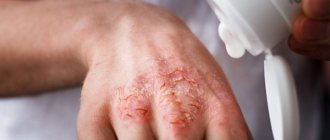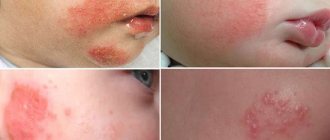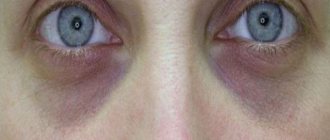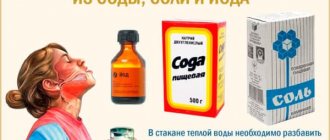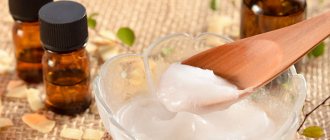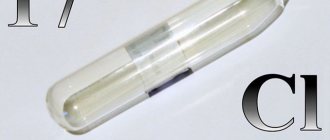Purulent inflammation of the hair follicle, which affects the surrounding tissues and the sebaceous gland, is called a boil (popular name - boil). It is caused by pathogenic bacteria and has an acute course. More often, men with oily, porous skin are susceptible to this disease.
Important! Self-treatment often leads to the formation of scars, which becomes an aesthetic problem. Also, without consulting a doctor, such inflammation can lead to a purulent abscess.
How to prevent such complications, and what to do if boils occur, we will look at in this article.
Boil causes
There is no doubt about the bacterial origin of the boil, since the main cause is said to be a staphylococcal infection. Normally, staphylococcus is part of the microorganisms living on human skin. And only about 10% of all bacteria of the Staphylococcaceae family are capable of causing infection.
Patients suffering from furunculosis have an imbalanced ratio of pathogenic and beneficial microflora. So the number of harmful microorganisms on their skin can reach 90%. The reasons for the predominance of pathogenic microorganisms can be: injuries followed by infection due to decreased immunity, ignoring the rules of skin hygiene.
Malfunctions of the immune system are often caused by the presence of foci of chronic infections in the body, such as:
- infectious and inflammatory disease of the paranasal sinuses (sinusitis);
- inflammation of the maxillary sinus (sinusitis);
- inflammation of the tonsils (tonsillitis).
Furunculosis is also provoked by various metabolic disorders, such as diabetes and endocrine pathologies. Corticosteroids and cytotoxic drugs are used in the treatment of these diseases. They suppress the immune system and have a number of other side effects, which also provokes the formation of boils.
Maceration of the skin with a tendency to sweat profusely can provoke injury and the entry of pathological flora into the hair follicle.
The skin loses its protection and pathogenic microorganisms can easily penetrate it if the following diseases occur:
- itching of the skin as a symptom of dermatological diseases;
- chronic allergic dermatitis
- seborrhea;
- eczema;
- dermatomycosis;
- scabies.
The formation of a boil in the ear or nose can provoke chronic otitis media, rhinitis, and other nasopharyngeal inflammations with the release of purulent contents.
Should I see a doctor?
There are many folk “grandmother’s” recipes, which seem to be designed to help the rapid maturation and opening of the abscess. But all these recipes can lead to disastrous consequences, since, on the contrary, they will contribute to the spread of infection into the deeper layers of the skin. At the stage of suppuration, it is only necessary to perform a surgical autopsy in a doctor’s office.
Only a dermatologist or surgeon can determine the type of inflammation, as well as the stage of development. To identify the cause, laboratory tests are required, and skin scrapings are done to identify the pathogen. For chronic rashes, it is recommended to check the patient's immune status. An important point in diagnosis is testing for STIs. Therefore, if purulent pathological processes occur on the skin, be sure to consult a dermatologist.
Localization of the disease
Furuncles often affect areas of hair on the body, as well as areas subject to frequent friction. These are the following parts of the body: neck, armpits, groin area, buttocks, mammary gland.
Boils with purulent contents can occur locally on the body or have a widespread distribution. The disease can occur in acute or chronic form, accompanied by a general deterioration of the patient's condition.
The appearance of a boil on the lip is unpleasant and especially painful. Moreover, boils can also occur on the labia.
A boil on the face in the nasolabial area is considered especially dangerous. There are vessels connected to the maxillary sinuses and the brain. Pyogenic bacteria of staphylococcal strains can penetrate through the sinuses into the brain.
Medicine knows of cases where self-medication of a boil led to infectious meningitis and death.
Particular attention and caution in terms of treatment should be caused by a boil in the nose. Such a pimple is nothing more than a purulent inflammation in the structure of the soft tissues of the head. The venous blood flow in these tissues has direct access to the cranial cavity. Therefore, through the blood, the infection can spread to brain tissue.
The sensation of ear itching, along with a painful, dense formation, indicates the presence of a boil in the ear. It is usually located at the entrance to the auditory organ, since the source of the pathological process originates in the hair follicles, sulfur or sweat glands.
Diagnosis of furunculosis
To determine furunculosis, you need to undergo several procedures:
- Visual inspection.
- Dermatoscopy.
- The contents of the boil are sent for bacteriological examination.
In some cases, the use of additional diagnostic methods is required:
- general blood and urine analysis;
- Ultrasound;
- bacterial culture of urine;
- rhinoscopy;
- pharyngoscopy;
- X-ray of the sinuses.
Such a thorough examination is required in the case of a severe chronic form of the disease in order to accurately establish the cause of its development. If furunculosis is not accompanied by complications, an external examination and blood test, culture of pus from the boil for sensitivity to antibiotics and flora is sufficient.
Furuncle in a child
In children, the formation of boils is caused by environmental factors, hypothermia, and disruption of the body's defenses. The most common location is the face. Self-medication in this case is not the best solution; medical consultation is necessary.
It is not difficult for a specialist to diagnose furunculosis. It is necessary to exclude hidradenitis, trichophytosis and anthrax. Distinctive features of anthrax at the initial stage: a formation that is something between a papule (a dense nodule on the skin) and a vesicle (a hemispherical vesicle) with a dark brown scab. Contains extensive skin infiltrate.
Stages of furunculosis
Before wondering how to treat furunculosis, first determine the stage of development of the disease:
- Mild degree - a boil is formed no more than twice a year, with only one always appearing, no intoxication of the body occurs.
- Moderate degree - there is a relapse up to three times a year, multiple inflammations appear, signs and intoxication are slightly expressed.
- Severe degree - furunculosis does not go away completely, constant intoxication is observed.
There are several stages of formation and development of this type of skin inflammation:
- infiltrates appear;
- necrosis, suppuration;
- healing.
Treatment of a boil
Main events:
- Warm compresses.
- Opening with subsequent drainage of the boil.
- Prescription of antibacterial therapy.
You can treat a boil yourself if it is small in size, the temperature does not rise, there are no diseases and there are no symptoms of intoxication.
You should seek medical help immediately if:
- There is intense pain or an increase in temperature.
- The boil is located on the nose and lips.
- The infection has spread to nearby tissue.
- After 14 days, the rod had not formed.
- A second infiltrate appeared.
- You suffer from the following diseases: cancer, diabetes, endocarditis, metabolic syndrome.
- Are you taking hormonal medications?
Prevention methods
You can reduce the risk of infection with staphylococcal bacteria and the development of furunculosis if:
- keep your body clean, take a shower regularly;
- carefully treat injuries and cuts;
- lead a healthy lifestyle;
- exercise regularly;
- diversify your diet, focusing on foods high in vitamins.
In addition, it is important to promptly treat emerging diseases of internal organs, as well as dress according to the season, avoiding overheating or hypothermia of the body.
Opening and ensuring outflow
It is strictly forbidden to open a boil when it is still hard and small in size. An autopsy should be performed when a necrotic core has formed and the boil itself has become soft. In exceptional cases, when this does not happen for a long time, it is opened. The surgeon does this. Large boils must be opened and drained; antibacterial agents and compresses will not work.
You need to know that compresses should be used after opening the chiria, and not just to speed up its maturation. Such compresses speed up the cleansing of the lesion and improve the outflow of pus.
Injections for furunculosis
Treatment for furunculosis with antibiotics can also be carried out using injections. Injections are given when therapy with other forms of drugs does not produce positive results. The most effective means in this form of release are:
- Levomycetin is an injection powder that contains the active ingredient antibiotic chloramphenicol. For the treatment of furunculosis in adults, intramuscular or intravenous use is prescribed, the daily dose is 1-3 g. The medicine is administered at a dose of 0.5-1 g twice a day. Therapy lasts 5-15 days. Adverse reactions may occur from the lymphatic, central nervous and peripheral systems. The cost of the product is about 50 rubles.
- Amoxicillin is a semisynthetic antibiotic belonging to the penicillin series. Prescribed intravenously by drip and stream for furunculosis. The doctor selects the dosage individually. On average, the therapeutic course lasts 7-10 days. During treatment, side effects such as headache, tachycardia, dysbacteriosis, irritability, and dyspeptic symptoms may occur. The cost of the drug is approximately 150 rubles.
What removes pus from a boil
After the boil has been opened, you can use not only compresses, but also apply Levomekolev ointment. Such compresses should be done only after the boil has been opened surgically, or has opened on its own. Levomekol liniment has a good antiseptic effect, which helps to quickly clean the wound from necrotic tissue and pus.
Important: under no circumstances open the boil yourself (do not squeeze, pierce, or cut). Such actions increase the risk of scarring and can also cause the spread of infection. Self-medication of furunculosis threatens to provoke thrombosis of facial veins, blood poisoning and even death of a person. In any case, with self-medication, scar formation is inevitable.
Ointments for furunculosis
In the photo there is an ointment for furunculosis
After an opening or breakthrough of the abscess occurs, a bandage with antibacterial ointments is applied to the wound:
- Levomekol ointment is the most effective topical antibiotic. The active ingredient is chloramphenicol, which destroys a wide range of bacteria. Methyluracil accelerates the process of tissue regeneration. The drug is applied to a gauze pad, which is applied to the wound. The bandage is changed every day until the problem is completely eliminated. If the ointment is used for too long, there is a possibility of skin rashes. The cost of the drug is about 120 rubles.
- Bactroban ointment is an effective remedy for combating Staphylococcus aureus. The ointment has a pronounced antibacterial effect. It is allowed to apply a small amount to the area of infection 1-3 times a day. The duration of the therapeutic course is 7-10 days. An allergic reaction, headache or nausea may occur. The cost of the ointment is about 100 rubles.
By the way
Diet also influences disease activity. During an exacerbation, you will have to give up foods rich in carbohydrates: cereals, potatoes, pasta. A complete ban on soda, buns, cakes, pastries, all kinds of sweets (replace them with raisins and dried apricots). Avoid fatty foods, fried foods, and sauces.
Fermented milk products, boiled meat, buckwheat, and legume dishes are healthy. And more vitamins! Fruits and fresh vegetables will provide vitamin C. Dress salads with unrefined vegetable oil (vitamin E). Carrots, butter, and liver will be fed with vitamin A. As for the B complex of vitamins (it is believed that fresh brewer's yeast helps with furunculosis), it is better to give the child preparations made from yeast.
And be sure to make sure he has bowel movements every day.
Fluid accumulation
The stage of infiltration (fluid accumulation) of the boil begins around the mouth of the follicle with the appearance of a bright red nodule, gradually increasing in size (up to 1-3 cm in diameter), thickening and becoming more and more painful, the process is accompanied by swelling of nearby tissues and a tingling sensation. A boil located near the lips, eyelids or on the cheeks has more pronounced swelling.
The process of pus formation and tissue necrosis begins at least 3 days from the beginning of its appearance. This stage is characterized by the appearance of a necrotic and purulent rod typical of a boil, which emerges on the surface of the skin in the form of a pustule. During this period, the body temperature can rise to 38°C, and pain in the area of the boil suddenly occurs. It is possible that intoxication symptoms may occur:
- headache;
- malaise;
- loss of appetite;
- weakness.
A mature boil breaks through, releasing a purulent formation and a necrotic core through the hole. After the boil breaks out, swelling, pain, infiltration processes and general symptoms disappear and a new stage begins - the healing process.
